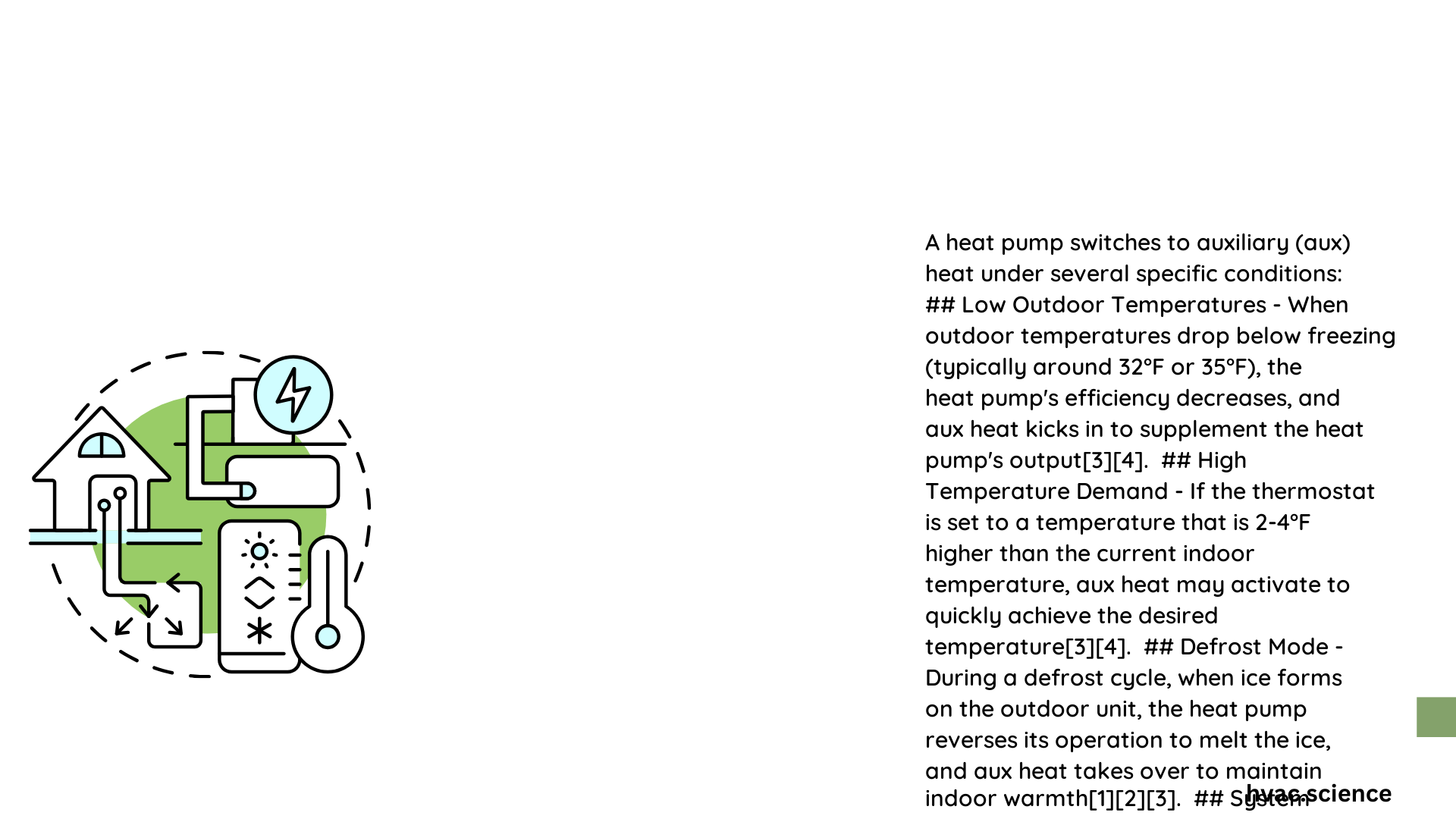Heat pump systems occasionally transition to auxiliary heat when primary heating mechanisms become inefficient. This critical switchover happens due to specific temperature conditions, system limitations, and performance requirements. Understanding these triggers helps homeowners manage energy consumption, maintain comfortable indoor temperatures, and prevent potential system malfunctions.
What Causes Heat Pump to Switch to Auxiliary Heat?
Temperature Thresholds and Performance Limitations
Heat pumps are sophisticated heating systems designed to extract warmth from outdoor air. However, their efficiency dramatically decreases under certain conditions:
| Temperature Range | Heat Pump Performance | Auxiliary Heat Likelihood |
|---|---|---|
| Above 40°F | High Efficiency | Low Probability |
| 35-40°F | Moderate Efficiency | Moderate Probability |
| Below 35°F | Low Efficiency | High Probability |
Key Triggers for Auxiliary Heat Activation
- Rapid Temperature Drops
- Indoor temperature falls 2-3 degrees below set point
- System cannot quickly restore desired warmth
-
Auxiliary heat provides immediate heating support
-
Outdoor Temperature Constraints
- Outdoor temperatures near or below freezing
- Heat pump struggles extracting thermal energy
- Electric resistance heating supplements primary system
How Does Auxiliary Heat Impact Energy Consumption?
Auxiliary heating mechanisms, typically electric resistance-based, consume significantly more energy compared to standard heat pump operations. Key considerations include:
- Energy Efficiency: Auxiliary heat can increase electricity consumption by 300-500%
- Cost Implications: Higher utility bills during extended cold periods
- Performance Limitations: Reduced overall heating system effectiveness
Troubleshooting Auxiliary Heat Activation
Common Diagnostic Steps
- Inspect outdoor unit for ice/snow accumulation
- Verify thermostat functionality
- Check refrigerant levels
- Examine reversing valve performance
- Schedule professional HVAC maintenance
Advanced Heat Pump Performance Strategies
Minimizing Auxiliary Heat Dependency
- Proper System Sizing
- Ensure heat pump matches home’s square footage
- Consider local climate conditions
-
Consult professional HVAC technicians
-
Intelligent Thermostat Programming
- Set conservative temperature ranges
- Utilize gradual temperature adjustments
- Implement zoned heating configurations
Technical Considerations for Cold Climate Heat Pumps
Modern heat pump technologies have significantly improved cold-weather performance:
- Cold-Climate Heat Pumps
- Operational down to -22°F
- Enhanced refrigerant compositions
- Advanced compressor technologies
- Reduced auxiliary heat dependency
Maintenance Recommendations
- Biannual professional system inspections
- Regular filter replacements
- Clean outdoor unit consistently
- Monitor system performance metrics
- Update firmware for smart thermostats
Conclusion

Understanding heat pump switching to auxiliary heat involves complex thermal dynamics, system design, and environmental factors. Proactive maintenance, intelligent system configuration, and continuous monitoring help optimize heating performance and energy efficiency.
